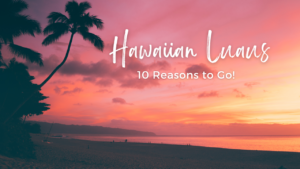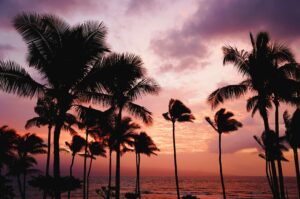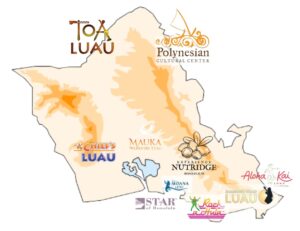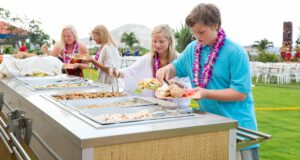FREQUENTLY ASKED QUESTIONS
This website was created to make researching and booking luau tickets easy, so please use the tools and information here to help you determine which one is right for you.
Things to consider before booking your luau
- Location & Transportation
- Timing & Availability
- Food & Drinks
- Atmosphere
- Entertainment vs. Education
Gathering to feast and celebrate was an ancient Polynesian tradition. But the modern luau can be traced back to the reign of King Kamehameha II. In 1819, he ended the ancient religious traditions, known as kapu, which forbade men and women from eating together. Kamehameha II introduced a less rigid atmosphere where all could gather and celebrate. These new feasts were the forerunners of the luau as we know it today.
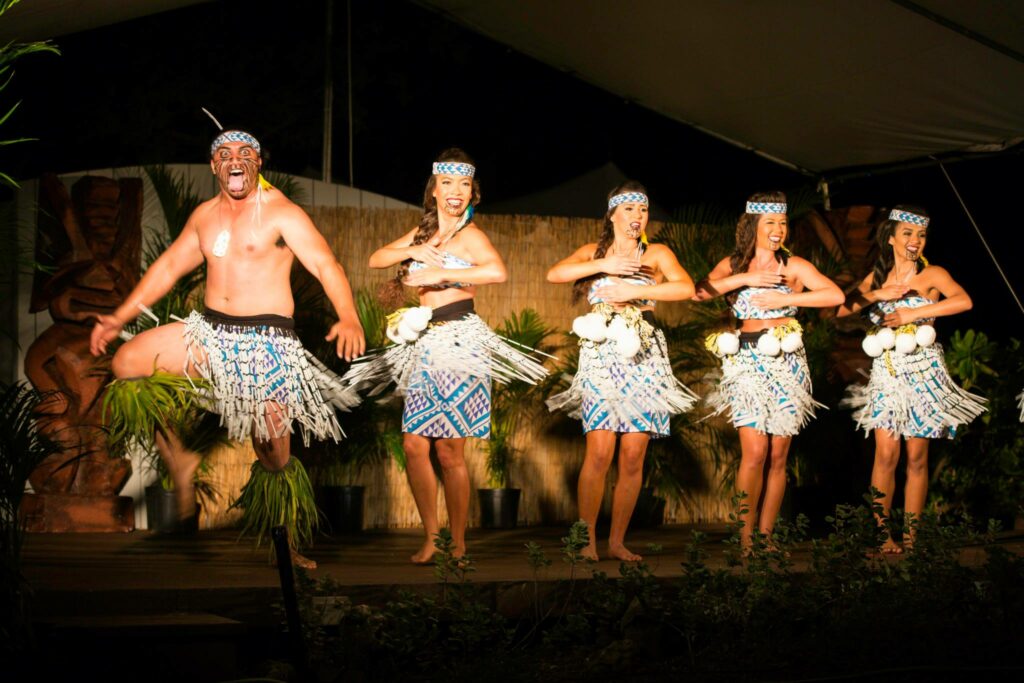
Most luaus start with some form of activity such a game, an Imu (earth oven) demonstration, or a hula lesson. A buffet dinner usually follows and often includes many traditional Hawaiian foods. The evening is then capped off with the entertainment, which typically consists of music, storytelling, hula, and fire knife dancing.
There are many luau venues to choose from, and though each venue’s offerings are different, you can be sure to have a fun and festive evening full of music, entertainment, good food, and an introduction to Hawaiian culture and history. However, luau venues can vary greatly in style and presentation (from authentic and educational to 1960’s retro kitsch), so be sure to find the one that best suits you.
Yes! Booking in advance is the only way to guarantee your spot at the luau of your choice. Most luaus are only held a few nights out of the week and have limited seating which books up quickly. This is especially true during the summer months and holidays. Booking ahead is the only way to guarantee a seat at the luau of your choice on a day that works with your schedule.
Many luaus provide transportation that will get you there right on time to begin enjoying the festivities.
If you’re planning on making your own way to the venue, we recommend that you arrive at the entry gate 30 minutes before it starts. Most luaus begin letting guests in 15 minutes prior, but lines tend to form well before opening. If seating is pre-assigned, there’s no need to get there early. However, some venues seat first-come-first-serve, so there is an incentive to arrive early and snag a seat closer to the stage.
Another thing to keep in mind is that most luaus, such as Ka Moana, Diamond Head, and the Polynesian Cultural Center, have lots of activities to enjoy well before the luau officially starts.
Relax, you’re in Hawaii! While we’re not aware of any luaus that have a formal dress code, it’s customary for guests to wear Hawaiian print shirts or dresses. Since most luaus are outdoors and often by the beach, flip flops and sandals are fine. You may want to bring along a light jacket or sweater, it can be slightly chilly and breezy after the sun goes down.
Please remember that luaus are family-friendly events. Don’t be that guy who thinks it’s funny to show up in a raunchy t-shirt.
You can learn more about what to wear at a luau from our blog post on this topic.
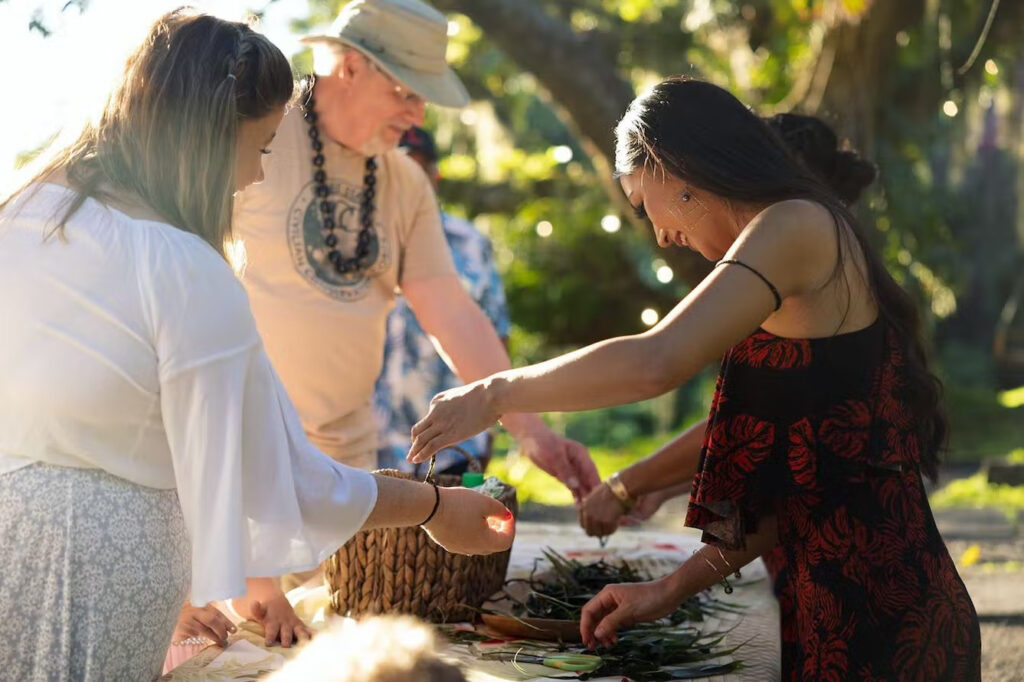
Luaus offer a variety of activities before dinner is served. Guests are often greeted with a lei welcoming ceremony, and then will have free time to explore the venue and learn a bit more about Polynesian traditions and cultures. Most venues offer an array of lessons, demonstrations, and games, which guests can choose to participate in or simply observe.
One highlight for many guests is the preparation or unveiling of the imu, the traditional in ground oven where the kalua pig is slow roasted. Other demonstrations might include wood carving or weaving by local artisans.
Some venues offer beginner lessons in hula, fire making, lei making, weaving, and even playing the ukulele. Temporary tattoos, souvenir headbands or bracelets, and lawn games like spear throwing or Ulu Maika (bowling) are often part of the pre-dinner fun.
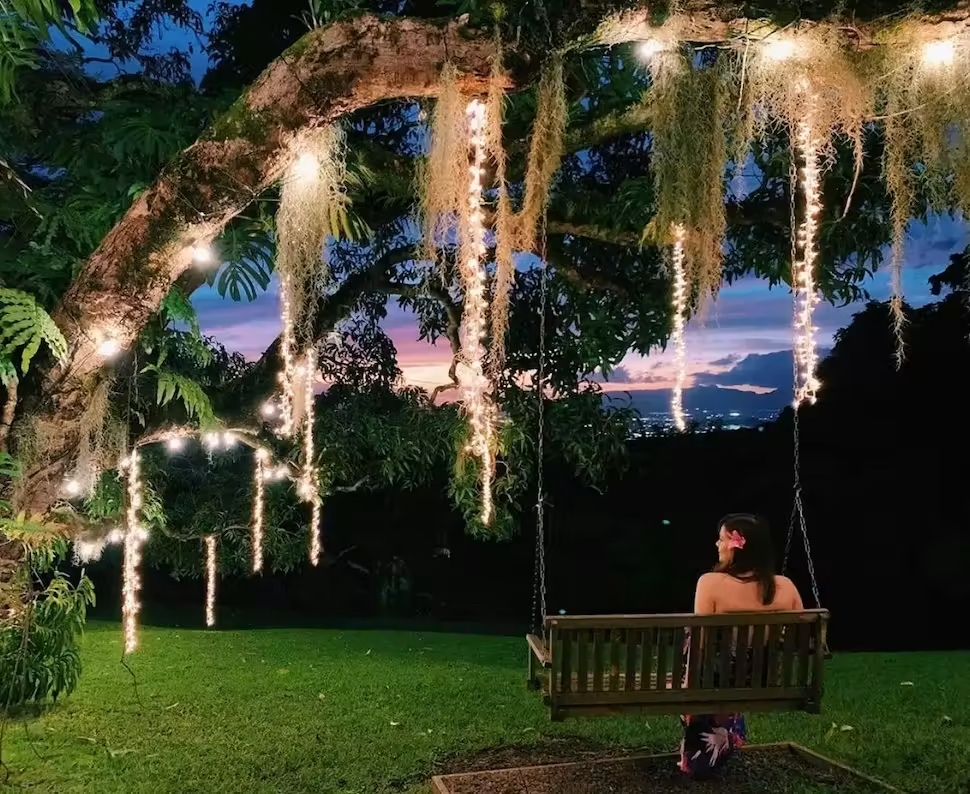
Exploring the luau venue itself can be an activity. There are many options to choose from, including an immersive cultural center, a historic macadamia nut plantation with sweeping views of Honolulu, a sunset dinner cruise, a sea life park, and a Las Vegas style dinner show – just name a few! Nature lovers might enjoy exploring nearby waterfalls or walking down nature trails before dinner, while others might prefer the lively energy that some of the man-made attractions have to offer.
The food at most luaus is served buffet-style, which tends to be more popular with guests. Most are all-you-care-to-eat and guests that have purchased upgraded seating usually get to go through the line first.
A few luaus, such as Luau Kalamaku on Kauai and Toa Luau on Oahu, offer sit-down dinners.
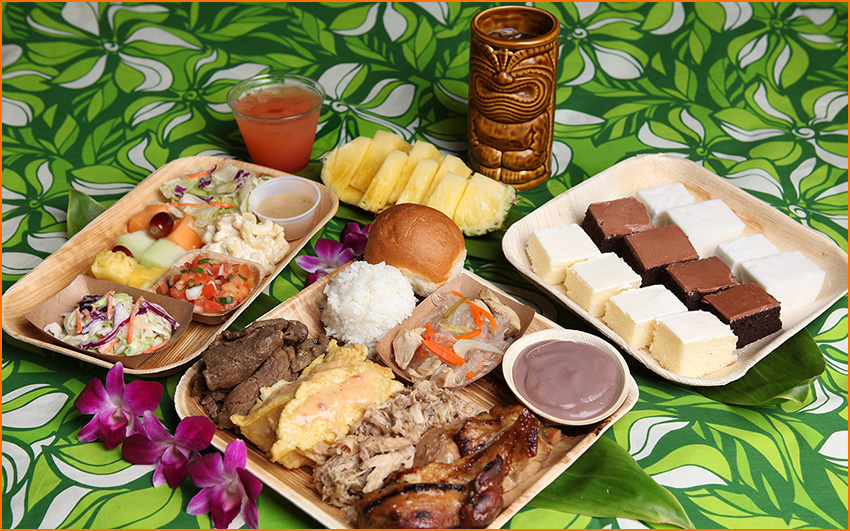
Although fish and shellfish are abundant in Hawaii, very few edible plants are indigenous to the islands. Early Polynesian settlers introduced taro, sweet potatoes, breadfruit, coconuts, bananas, and sugarcane – in addition to bringing pigs and chickens with them when they sailed across the Pacific Ocean. These ingredients quickly became the staples of the Hawaiian diet and are featured on many luau menus. Here are some traditional Hawaiian dishes you might find at a luau:
- Kalua pork – A whole pig, slow roasted in an underground oven called an imu.
- Laulau – Meat or fish wrapped in ti & taro leaves and slow cooked in the imu.
- Luau – Taro leaves cooked in coconut milk, often with squid or chicken added
- Poi – Hawaii’s staple starch, the taro root is cooked and pounded into a purple sticky, paste. Poi can be served fresh with a slightly sweet taste, or tangy to sour when it is allowed to naturally ferment.
- Haupia – A traditional Hawaiian pudding (with a gelatin-like consistency) made from cooking coconut milk and sugar with arrowroot or cornstarch.
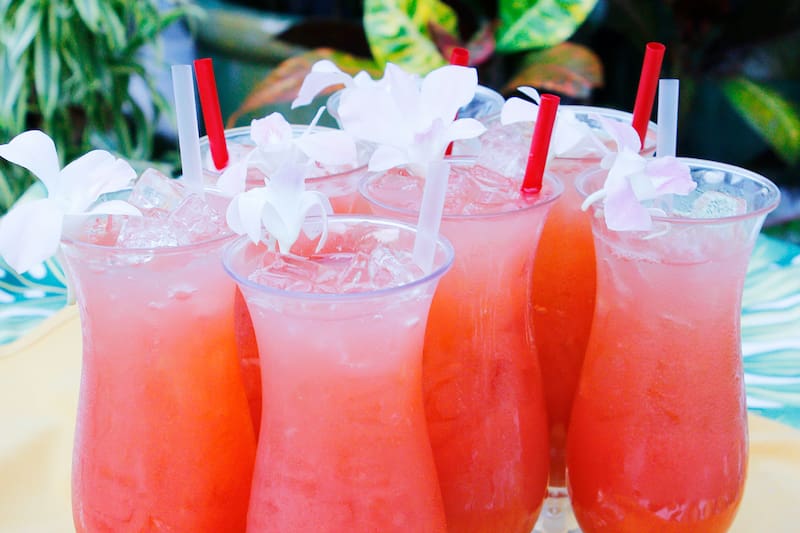
In addition to all the delicious food, you can’t throw a proper feast without also serving some fun, festive beverages. If you’ve always imagined your Hawaiian luau with a fruity, tropical umbrella drink in your hand, then you will not be disappointed.
- Mai Tai – The classic Mai Tai has been an island favorite since its introduction in the 1950’s. Though every venue adds their own twist, it typically consists of rum, orange curacao, orgeat (almond syrup), pineapple juice, and may be topped with a grenadine or dark rum float.
- Blue Hawaii – Invented in Waikiki in 1957, this bright and refreshing blue or turquoise cocktail made of vodka, rum, blue curacao, and pineapple juice is a Hawaiian favorite.
- Blue Hawaiian – A tasty variation of the Blue Hawaii, the Blue Hawaiian is essentially a Pina Colada with the addition of blue curacao liqueur and is often served as a blended drink.
- Lava Flow – A delicious, boozy, smoothie made of rum, strawberries, banana, pineapple juice, and cream of coconut. It is blended and layered to mimic flowing lava and looks as impressive as it tastes.
Most venues also offer beer, wine, soft drinks, and other non-alcoholic options. Most, but not every venue serves alcohol, so please keep this in mind when booking. Drinks (or drink tickets) may or may not be included in the price of admission and may be added when making reservations.
Transportation to and from the luau can also be added to your reservation. Why not leave all the driving and parking to someone else?
Generally speaking, luaus have no problem accommodating dietary restrictions and specific diets. Most luaus will have options that fit into a vegetarian and vegan diet, including poi and other vegetable-based dishes. Many traditional luau dishes are naturally gluten-free, but if you’re seriously intolerant it’s a good idea to note that at the time of booking. Just ask the luau if they can accommodate your needs. In most instances, they’ll have had the same request hundreds of times before.
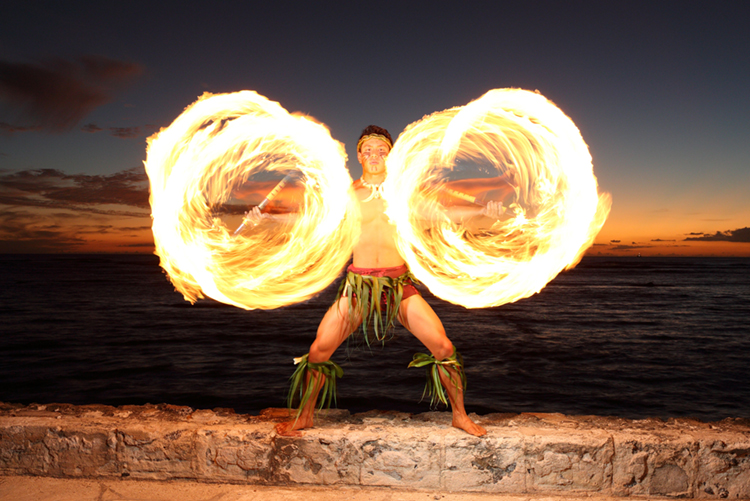
The highlight of any luau show is the fire knife dancing show. The dancers will have you on the edge of your seat as they twirl and throw their fiery weapons while performing feats that seem utterly impossible.
The Samoan Siva Afi, or fire knife dance, is based on an ancient tradition where warriors would demonstrate their battle prowess through dance and the art of twirling and throwing their weapons. Much more than just a war dance, storytelling and honoring battles fought also played an integral role. Torches were twirled and swung in remembrance of an important victory against Tongan invaders.
The tradition of fire knife dancing was widely forgotten to many generations of Samoans and nearly lost but experienced a revival in the 1940’s when several Samoan performers began performing for crowds throughout the mainland US and Hawaii.
Since the mid-19th century, fire knife dancing has gained in popularity in many Polynesian nations. It has become a popular competitive sport and exhibitions are held throughout the world. The World Fire Knife Championship is held on Oahu every May and fire knife dancing is often featured in island shows in Samoa, Tahiti, Fiji, and Tonga, and is the star performance in almost every Hawaiian luau show.
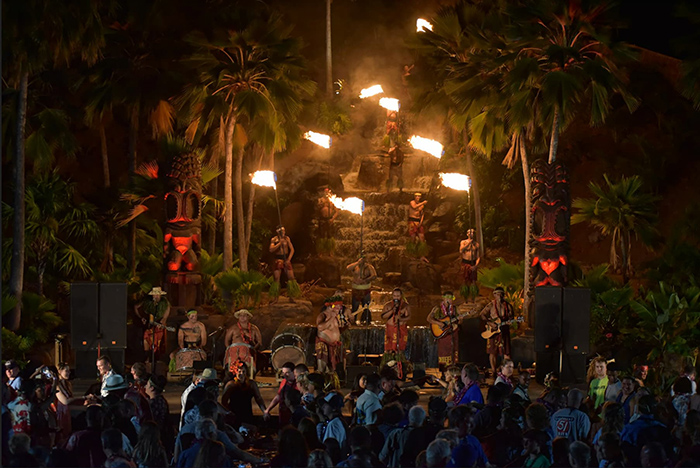
Although today’s fire knife dance routines have been modernized to please an audience and made safer for the dancers (blades are typically not used in performances), it offers a fascinating glimpse at an ancient warrior culture and remains an exciting experience that you will not soon forget.
Traditionally, kalua pig is cooked in an imu, which is an oven dug into the earth. The whole pig is wrapped and covered in ti leaves, then placed on hot stones and left to steam. Some luaus hold a ceremony when the pig is removed from the imu and carried off to be chopped up and served. This is often just for show, as health code restrictions usually prevent luaus from serving imu-cooked foods to guests. Some venues may not have an imu on-site or hold an imu ceremony during the luau. If this demonstration is important to you, be sure to check before booking.
Of course you want to capture the memories of your luau, whether it’s your first or your tenth. Bring a camera—and a spare memory card—and take lots of pictures of the expansive buffet, the thrilling entertainment, and the beautiful views (both the performers and the landscapes). Your friends will be so jealous!
However, be aware that a few venues prohibit filming during their original stage productions. This is usually not the case, but venues like Rock-a-Hula and the Polynesian Cultural Center do not allow filming inside their theaters.
Most luaus take place outside, on flat lawns covered in astroturf. They are usually wheelchair accessible. However, be sure to let your booking agent know of any special needs so they can accommodate you better. Especially if you will be taking their transportation to the luau, as not all coaches can accommodate wheelchairs.
For light showers that will pass quickly, no. For more severe weather conditions, the luau may need to be canceled, but such occurrences are rare. In this case, a booking agent from the luau will contact you to reschedule or issue you a refund. In the event of rain, luaus will move to a covered area if one is available. Likewise, luaus that are held under tents and pavilions are slightly more weather-proof than other venues.


